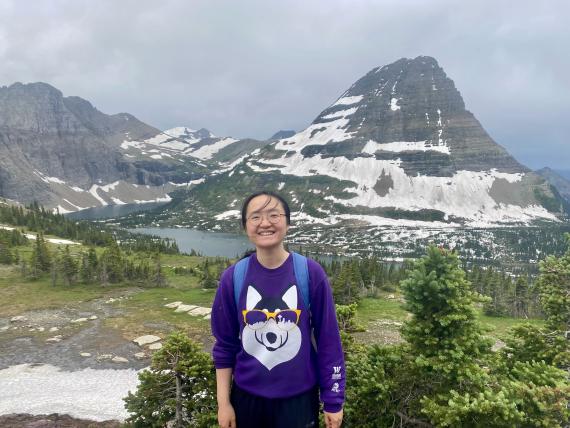By Yuna Liu
Majoring in Applied Mathematics was a surprise for me. Before being admitted to the University of Washington, I wanted to pursue math and continue my study in a Ph.D. program. I initially applied to Applied Mathematics out of curiosity with only an obscure image of the field. I had no idea what I could find within the department.
The first turning point happened when I started working at Asbury Lab as a research assistant. My mentor, Bonnibelle Leeds, showed me what beautiful things mathematical modeling could do when illuminating the mechanism behind mitosis. The research experience is quite different from attending classes. This pushed me to think about how an applied mathematics education could help me to solve problems in the real world. At the end of my sophomore year, I began to see computational biology as my future study.
The curriculum provided by the department is intense and satisfying at the same time. The courses cover from partial differential equations (AMATH 423) to applications in ecology (AMATH 423) and neuroscience (AMATH 422). The project-oriented classes encourage me to learn a lot. I always remember grinding through different scientific papers to reproduce the results and building the Ebola projection model with my friends. The flexibility of the curriculum allows me to explore graduate courses in cancer modeling (AMATH 536). The rich research-based content opens the door to mathematical oncology for me. Different instructors bring their understanding of applied mathematics to the classroom. As Professor Hong Qian wrote, "It is safe to say now there is almost no area untouched by applied mathematics” [1]. Although homework and projects are challenging, I benefit immensely from the education the Department of Applied Mathematics provides.
Besides all the wonderful courses, I love the community that the department cultivates. During my junior year, Professor Eric Shea-Brown welcomed me into the Theoretical Neuroscience Journal Club. It opens my eyes to computational neuroscience and literature reading. During my time at the journal club, I collaborated with graduate students to give my first-ever journal club presentation. With the great help of department advisor Becky Beard, my friends and I founded the applied math club. The diversity committee planned many events to enrich undergraduate experience. I was lucky enough to collaborate with the committee to advertise AMATH Grad School Panel. I also had a lot of fun participating in the DEI Month's scavenger hunt organized by the committee.
My time in the Department of Applied Mathematics has given me something more than courses. I spent my most important three-years of college within the department. I can't wait to carry all my memories and knowledge from the department to embrace my next journey.
Reference
- Hong, Q. Brief Report on Panel Discussion "Future Research Directions in Applied Mathematics at the AMATH 50 Celebration". Autumn 2020 Newsletter, (2020).
